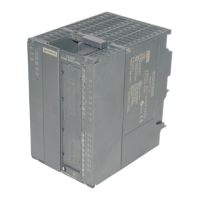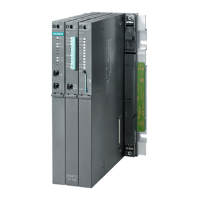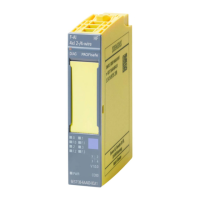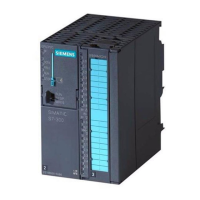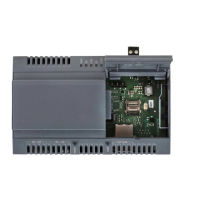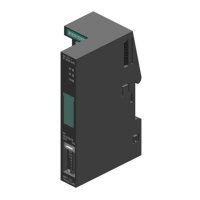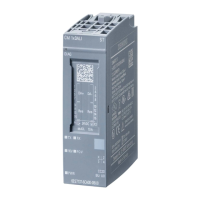Writing Traversing Programs
10-5
FM 353 Stepper Drive Positioning Module
6ES7 353-1AH01-8BG0
Example of external block change
The following figures show the program structure and program flow of an example
of “External block change.”
/
G1
G2 G3 X/t F M1
M2
M3 D
10 50
20
10 000 1 000
1 30012 000
N
1 300
1 000
F
N10 N20
X
X
E
E − digital input
12 00010 000
Notes to the example of external block change
The axis travels until a signal change from 0 to 1 takes place at the digital input.
This triggers two reactions:
S A block change on-the-fly, and thus immediate processing of block N20.
S Storage of the actual position at the time of this signal change to “Actual value
block change.” This position is also the starting position for any subsequent in-
cremental programming.
Depending on the situation, N20 is processed as follows:
S If the block position in N20 is less than the actual position at the time when the
digital input is received (reversal of direction), the equipment is stopped so that
the position can then be approached in the opposite direction.
S If no position is programmed in block N20, movement is braked, the functions
programmed in N20 are executed, and processing then moves on to the next
block (except if the block contains M0, M2 or M30).
S If the programmed path in block N20 is less than the deceleration distance, the
programmed position is overshot and then positioned by a reversal of direction.
If no signal change occurs at the digital input, the target position of N10 is ap-
proached, with the following additional response:
When the target position is reached, the error message “Digital input not actuated”
is output (see Table 11-5, Class 2 No. 15).
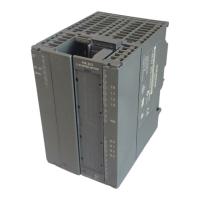
